A particle of mass m and negative charge q is thrown in a gravity free space with speed u from the point A on the large non conducting charged sheet with surface charge density σ as shown in figure. Find the maximum distance from A on sheet where the particle can strike.
⇒ Maximum horizontal distance
Related Solutions
A particle of mass M and negative charge q is thrown in a gravity free space with speedd u from the point A on the large non conducting charged sheet with surface charge density (sigma), as shown in figure, Find the maximum distance from A on sheet where the rparticle can strike .
View SolutionIn the figure shown there is a large sheet of charge of uniform surface charge density.A charge particle of charge and mass is projected from a point A on the sheet with a speed with the angle of projection such that it lands at maximum distance from A on the sheet. Neglecting gravity, find the time flight
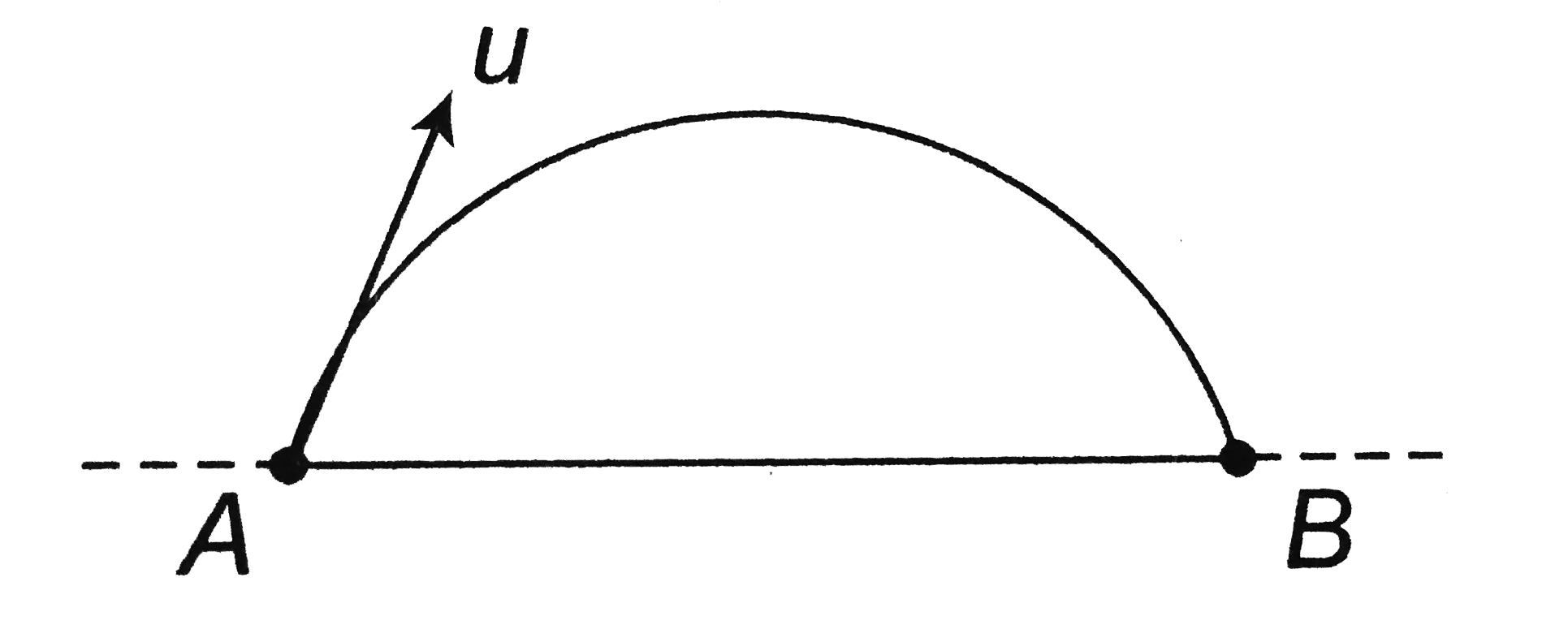 View Solution
View SolutionIn the figure shown there is a large sheet of charge of uniform surface charge density 'sigma' .A charge particle of charge '-q' and mass 'm' is projected from a point A on the sheet with a speed 'u' with the angle of projection such that it lands at maximum distance from A on the sheet. Neglecting gravity, find the time flight
View Solutionएक कण जिसका द्रव्यमान m एवं ऋणात्मक आवेश q है, गुरूत्वाकर्षण रहित क्षेत्र में v वेग से बड़े कुचालकिय आवेशित पट्टिका (sheet) जिसका आवेश घनत्व के है। A बिन्दु से फेंका गया। A बिन्दु से अधिकतम दूरी ज्ञात करें जहाँ कण टकरा सकता है।
 View Solution
View SolutionFigure shows a charge +Q clamped at a point in free space. From a large distance another charge particle of charge -q an.d mass m is thrown toward +Q with an impact parameter d as shown with speed v. Find the distance of closest approach of the two particles.
View SolutionTwo point charges and are released from rest in a gravity free hall when distance between them is . Find the maximum speeds of charged particle. The mass of each charged particle is .
View SolutionA small charged particle of mass ‘m’ and charge q is suspended by an insulated thread in front of a very large conducting charged sheet of surface density of charge . The angle made by the thread with the vertical in equilibrium is
 View Solution
View SolutionA small charged particle of mass m and charge q is suspended by an insulated thread in front of a very large conducting charged sheet of uniform surface density of charge . The angle made by the thread with the vertical in equilibrium is
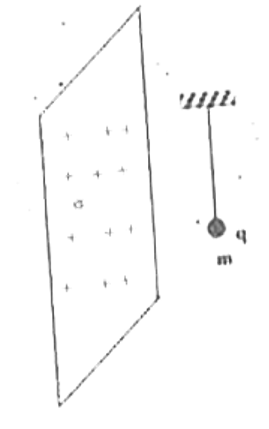 View Solution
View SolutionA charged ball from a silk thread, which makes an angle with a large charged conducting sheet. The surface charge density of the sheet is proportional to…..
View SolutionA charged ball hangs from a silk thread , which makes an angle with a large charged conducting sheet , as shown in the figure. The surface charge density of the sheet is proportional to
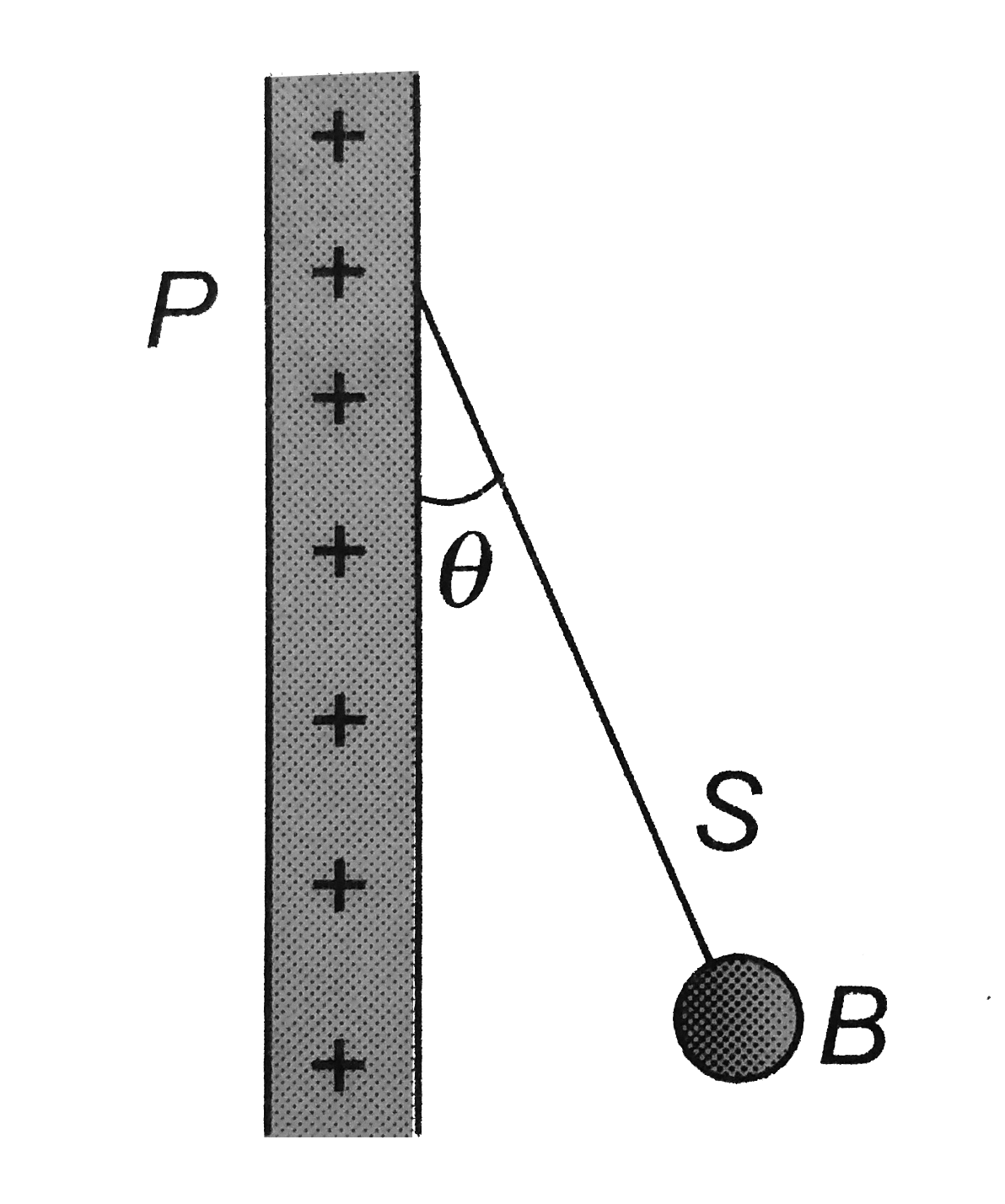 View Solution
View SolutionA charged ball B hangs from a silk thread S, which makes an angle with a large charged conducting sheet P as shown in figure. The surface charge density of the sheet is proportional to
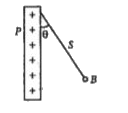 View Solution
View SolutionA charged ball B hangs from a silk thread S , which makes an angle theta with a large charged conducting sheet P , as shown in the figure. The surface charge density sigma of the sheet is proportional to
View SolutionA charged ball B hangs from a silk thread S, which makes an angle theta with a large charged conducting sheet P, as shown in figure. The surface charge density sigma of the sheet is proportional to
View SolutionA charged ball B hangs from a silk thread S. Which makes an angle 0 with a large charge conducting sheet P as shown in the figure. The surface charge density sigma of the sheet is proportional to
View SolutionA charged ball B hangs from a silk thread S, which makes an angle with a large charged conducting sheet P, as shown in figure. The surface charge density of the sheet is proportional to
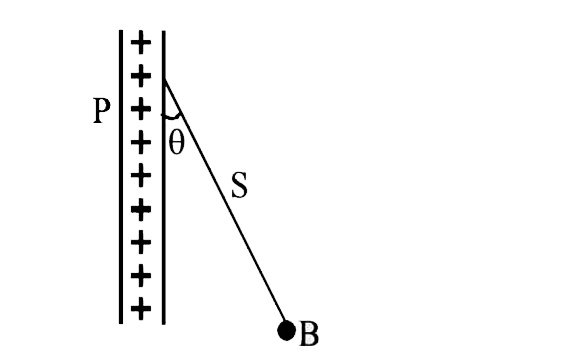 View Solution
View SolutionA block having mass m and charge Q is resting on a frictionless plane at a distance d from fixed large non-conducting infinite sheet of uniform charge density as shown in Figure. Assuming that collision of the block with the sheet is perfectly elastic, find the time period of oscillatory motion of the block. Is it SHM ?
View SolutionUniform dorsal charge density of an infinitely large flat sheet + sigma is. Find the expression for the work done to bring a point charge q from infinity to a point at a distance r in front of this charged plane sheet.
View SolutionConsider the situation described in the previous example. A particle of mass m having a charge q is placed at a distance d from the metal sheet and is projected towards it. Find the maximum velocity of projection for which the particle does not hit the sheet.
View SolutionConsider the situation described in the previous example. A particle of mass m having a charge q is placed at a distance d from the metal sheet and is projected towards it. Find the maximum velocity of projection for which the particle does not hit the sheet.
View SolutionConsider the situation described in the previous example. A particle of mass m having a charge q is placed at a distance d from the metal sheet and is projected towards it. Find the maximum velocity of projection for which the particle does not hit the sheet.
View Solution
